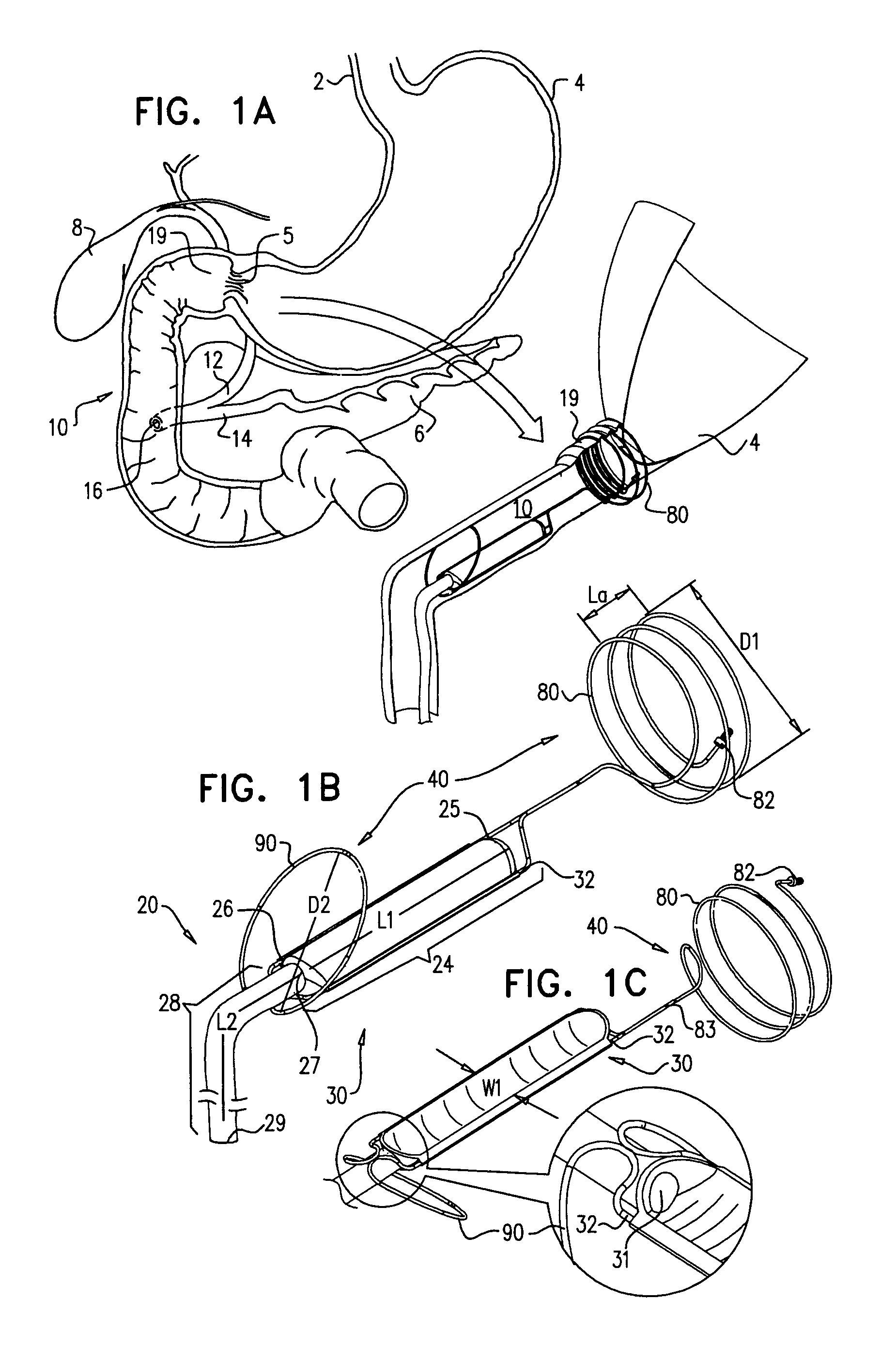Pancreaticobiliary diversion device
a pancreatic and biliary technology, applied in the field of pancreatic and biliary diversion devices, can solve the problems of affecting the fat digestion process in the body, disrupting the process of fat digestion, etc., and achieve the effect of reducing emulsification and formation of micelles and facilitating fat digestion
- Summary
- Abstract
- Description
- Claims
- Application Information
AI Technical Summary
Benefits of technology
Problems solved by technology
Method used
Image
Examples
Embodiment Construction
[0148]Reference is made to FIGS. 1A-B, which are schematic illustrations of apparatus 20 for diversion of pancreaticobiliary secretions, in accordance with some applications of the present invention. Apparatus 20 is typically configured for placement inside a gastrointestinal tract of a subject. FIG. 1A provides a schematic illustration of several components of a human digestive system. During the process of food digestion, food passes through esophagus 2 into stomach 4. The content of stomach 4 passes through pylorus 5 into the first section of the small intestine, duodenum 10. Bile, which aids in the process of fat digestion, is stored between meals in gallbladder 8. When the bile is released from gallbladder 8, it flows through the cystic duct and the common bile duct 12. Pancreas 6 produces exocrine secretions, including digestive enzymes, which pass through pancreatic duct 14. Pancreatic duct 14 merges with common bile duct 12 and together they form, at a medial side of a secon...
PUM
 Login to View More
Login to View More Abstract
Description
Claims
Application Information
 Login to View More
Login to View More - R&D
- Intellectual Property
- Life Sciences
- Materials
- Tech Scout
- Unparalleled Data Quality
- Higher Quality Content
- 60% Fewer Hallucinations
Browse by: Latest US Patents, China's latest patents, Technical Efficacy Thesaurus, Application Domain, Technology Topic, Popular Technical Reports.
© 2025 PatSnap. All rights reserved.Legal|Privacy policy|Modern Slavery Act Transparency Statement|Sitemap|About US| Contact US: help@patsnap.com



